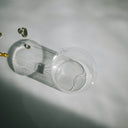Finasteride is a medication primarily used to treat hair loss in men and benign prostatic hyperplasia (BPH). As its popularity has grown, many individuals seeking this treatment wonder who is authorized to prescribe it. Understanding the prescribing authority can help patients navigate their healthcare options effectively.
Table of content
Who can prescribe finasteride?
Finasteride can be prescribed by licensed healthcare providers, which typically include medical doctors (MDs), doctors of osteopathic medicine (DOs), and nurse practitioners (NPs). Dermatologists, urologists, and primary care physicians are the most common specialists who prescribe finasteride, particularly for conditions like androgenetic alopecia (male pattern baldness) and BPH. In some cases, physician assistants (PAs) may also have the authority to prescribe the medication, depending on state regulations and their collaborative agreements with supervising physicians.
To obtain a prescription for finasteride, patients typically need to have a consultation with a healthcare provider, during which their medical history and specific symptoms will be evaluated. The provider will determine whether finasteride is an appropriate treatment option based on individual health needs and potential drug interactions.
As your leading source for hair health information over the past 4 years, we never compromise on accuracy. When it comes to your health, you deserve information you can truly rely on - and earning your trust is our top priority.
Here's how Scandinavian Biolabs ensures every piece of content meets the highest standards of accuracy and integrity:
- Credentialed Experts: Our reviewers are actively practicing doctors and medical researchers
- Stringent Reviews: Content undergoes rigorous editing by subject specialists and review by a practicing doctor.
- Evidence-Based: We rely on well-established research from trusted scientific sources like peer-reviewed journals and health authorities.
- Full Transparency: Our editorial standards, writer credentials, reviewer credentials, correction process, and funding are all publicly documented.
- Independent Voice: While we do promote products, we operate in a vacuum to business operations. Our main goal is just an unwavering commitment to providing medically-sound guidance.
You can count on Scandinavian Biolabs to consistently deliver the trustworthy health information you deserve. Read our Editorial Standards.
Understanding the role of healthcare providers in prescribing finasteride
Healthcare providers play a crucial role in assessing whether finasteride is suitable for a patient. This involves evaluating the patient's overall health, understanding their specific concerns regarding hair loss or prostate health, and discussing the potential benefits and risks associated with the medication. The prescribing provider will also monitor the patient's response to treatment and make necessary adjustments to the dosage or explore alternative therapies if needed.
Why is finasteride prescribed?
Finasteride is primarily prescribed for two main conditions:
- Androgenetic Alopecia: Commonly known as male pattern baldness, this condition affects a significant number of men and can lead to psychological distress and reduced quality of life. Finasteride helps by inhibiting the conversion of testosterone to dihydrotestosterone (DHT), a hormone linked to hair loss.
- Benign Prostatic Hyperplasia (BPH): This is a condition characterized by an enlarged prostate, which can lead to uncomfortable urinary symptoms. Finasteride helps reduce the size of the prostate and relieve symptoms by decreasing DHT levels.
How to get a prescription for finasteride
To get a prescription for finasteride, patients should follow these steps:
- Find a qualified provider: Search for a licensed healthcare professional who has experience treating hair loss or prostate conditions. This can include dermatologists, urologists, or primary care physicians.
- Schedule a consultation: Book an appointment to discuss your symptoms and health concerns. Be prepared to provide your medical history and any medications you are currently taking.
- Discuss treatment options: During the consultation, the provider will explain the benefits and risks associated with finasteride and may conduct tests to confirm the diagnosis.
- Follow the provider's recommendations: If finasteride is deemed appropriate, the provider will write a prescription. Make sure to follow the dosage instructions and attend any follow-up appointments to monitor progress.
Potential side effects of finasteride
While finasteride is generally well-tolerated, it can cause side effects in some individuals. Common side effects may include:
- Decreased libido
- Erectile dysfunction
- Decreased semen volume
- Breast tenderness or enlargement
It’s important to discuss any side effects experienced with the prescribing provider, as they can provide guidance on managing these issues or consider alternative treatments if necessary.
Conclusion
In summary, finasteride is a prescription medication that can be prescribed by licensed healthcare providers, including MDs, DOs, NPs, and in some cases, PAs. It is primarily used to treat androgenetic alopecia and benign prostatic hyperplasia. If you are considering finasteride, consult a qualified healthcare professional who can evaluate your specific needs and determine the best treatment plan for you.
Tired of Thinning Hair? Try a Clinically Tested Serum.
Looking for a natural way to regrow hair and achieve a thicker, fuller head of hair? Ditch the stinging nettle for hair loss – Bio-Pilixin Serum is a drug-free hair activation serum that delivers clinically tested results.
Here's why Bio-Pilixin is superior:
- Clinically Tested Results: 93% of users saw a reduction in hair loss, and 73% experienced increased hair density.
- Safe and Natural: Unlike harsh chemicals, Bio-Pilixin uses plant growth factors derived from stem cell technology to nourish hair follicles and stimulate growth.
- Fast-Acting: See visible results in as little as 45 days (most typically see results within 150 days).
Stop wasting time on unproven remedies. Bio-Pilixin is the safe, natural serum you've been searching for.
Read more:






